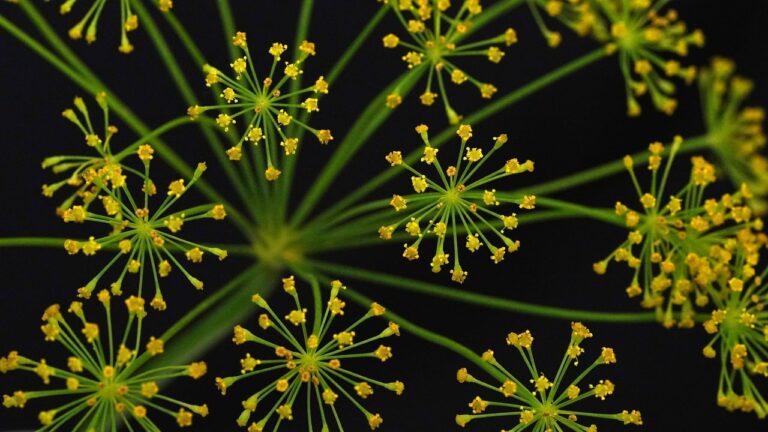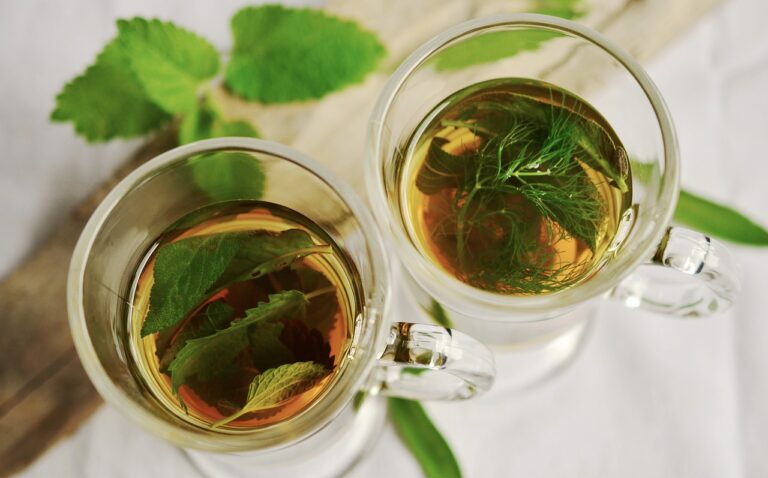Exploring the Culinary Uses of Herbs: Cooking Techniques and Combinations for Dishes
Mastering herb pairings like basil with tomatoes yields flavorful dishes. Herb-infused oils and butters enrich taste profiles. Experiment with custom blends for unique flavors. Use spices judiciously to avoid overpowering dishes. Health benefits include antioxidants and immune support from herbs. Create tangy dishes by infusing vinegars with herbs. Uplift dishes by infusing oils, making herb butter, and crafting unique blends. The world of herb-infused cooking techniques awaits, offering a journey through enriching dishes with diverse flavors and aromas.
Culinary Herb Pairing Tips
When preparing meals, mastering culinary herb pairing tips is important for achieving ideal flavor combinations. Herbs and spices play a crucial role in enhancing the taste of dishes, and understanding which ones work well together can enhance your culinary creations. Different culinary traditions offer unique insights into herb pairing, such as using basil with tomatoes or parsley with fish to create harmonious flavor profiles. These time-tested combinations have been refined over generations and can provide a roadmap for delicious meals.
Experimenting with herb combinations is a fun way to discover new and exciting flavors. Whether it’s creating herb butter, using a bouquet garnish, or infusing vinegar with herbs, there are endless possibilities to investigate. Premixed herb blends can also be a convenient option, saving time in the kitchen while still adding complexity to your dishes. These blends are carefully curated to guarantee a balanced mix of flavors, making them a handy tool for both beginner and seasoned chefs.
Herb-Infused Cooking Methods
Incorporating fresh or dried herbs into cooking methods adds depth and richness to dishes by enhancing flavors through the infusion process. Herb-infused cooking techniques such as simmering, braising, sautéing, roasting, and grilling offer a range of flavor profiles to investigate. When adding herbs during cooking, timing is vital as different herbs release their essential oils and flavors at varying rates. This guarantees that the herbs’ aromatic properties are fully utilized, enriching the overall taste of the dish.
To create herb-infused oils or butters, fresh or dried herbs are steeped in oil or melted butter, allowing the herbs’ flavors to infuse thoroughly. These herb-infused oils and butters add a rich herbal essence to a variety of dishes, from salads to meats, enhancing the flavor profile and aroma significantly.
The beauty of herb-infused cooking methods lies in the ability to customize dishes based on personal preferences. Experimenting with different herbs and infusing techniques can lead to a deeper understanding of how herbs interact with various ingredients. Ultimately, incorporating herb-infused cooking methods not only enriches the taste of dishes but also lifts the dining experience by adding layers of complexity to flavors and aroma.
Creating Herb-Flavor Combinations
When it comes to crafting herb-flavor pairings, the key is to match herbs that harmonize with each other to elevate the dish’s flavor. Balancing the strength of herbs is essential to avoid any one flavor dominating the dish. Trying out various herb combinations enables a customized touch and unveils a realm of culinary possibilities.
Pairing Herb Flavors
To create harmonious and flavorful blends, one must carefully balance the intensity, aroma, and taste of different herbs when pairing herb flavors. Combining herb flavors can enrich the taste profile of dishes by creating unique and complementary flavor combinations. It’s essential to understand the characteristics of each herb to select the right combinations that will heighten the overall flavor of a dish. Certain herbs like basil, rosemary, and thyme are known to pair well together, forming classic herb combinations found in various cuisines. Experimenting with herb flavor pairings allows for the creation of signature dishes with distinct and memorable tastes. By skillfully balancing the intensity of each herb, one can achieve a perfect harmony of flavors that will delight the palate.
Balancing Herb Intensity
Understanding the potency of different herbs is vital for creating harmonious flavor combinations in dishes. Balancing herb intensity involves combining strong herbs like rosemary or thyme with milder options such as parsley or chives to achieve a well-rounded herb flavor profile. It’s essential to adjust herb quantities based on personal preferences and the specific dish being prepared to achieve the desired level of herb intensity. Experimenting with herb combinations can reveal unique flavor profiles that enhance the taste of various dishes, enriching their overall complexity. By properly balancing herb intensity, flavors in dishes are enriched, adding depth and character to the culinary experience. Adjusting the herbs in a dish can lead to a more enjoyable and flavorful meal.
Experimenting With Herbs
In my culinary exploration, I often find that blending basil, chives, and garlic creates a fresh and aromatic twist in herb-flavor combinations. These three herbs complement each other beautifully, with basil providing a hint of sweetness, chives adding a mild onion flavor, and garlic bringing its distinctive pungency. To further enrich dishes, consider creating herb-infused oils or vinegars using rosemary, thyme, and peppercorns for added depth of flavor. The infusion process allows the herbs to impart their essence into the oils or vinegars, resulting in a versatile and flavorful ingredient. Experimenting with different herb combinations like dill, parsley, and lemon zest for a zesty seasoning or sage, rosemary, and garlic for a savory blend can uplift your culinary creations to new heights.
Enhancing Dishes With Spices
Derived from various plant parts like seeds, roots, bark, or fruit, spices are essential ingredients that provide concentrated flavors to dishes, enhancing their overall taste profile. Spices, when used in dried form, add depth and complexity to a dish, working harmoniously with herbs to create a well-rounded flavor experience.
In cooking, spices play a pivotal role in elevating dishes by infusing them with distinctive tastes. They can range from subtle undertones to bold, pungent flavors, so it’s important to use them judiciously to avoid overpowering the dish. Some commonly used spices like cinnamon, cumin, turmeric, and paprika are not only versatile but also staples in global cuisines, adding unique characteristics to various culinary creations.
To make the most of spices, incorporating them into different cooking techniques such as sautéing, roasting, or braising can help reveal their full potential. These methods release the essential oils and flavors of the spices, intensifying their impact on the overall dish. By being mindful of the intensity of spices and experimenting with various combinations, one can master the art of enhancing dishes with these aromatic ingredients.
Health Benefits of Herb Usage
I will be discussing the health benefits of using herbs in culinary practices. Herbs like garlic, turmeric, and ginger are known for their anti-inflammatory properties, aiding in boosting the immune system. Additionally, fresh herbs are packed with antioxidants, which can help reduce oxidative stress and promote overall well-being.
Herb Health Advantages
When exploring the health advantages of using herbs in culinary practices, one can discover a multitude of benefits that contribute to overall well-being and disease prevention. Fresh herbs are packed with antioxidants that support the immune system and help prevent conditions like heart disease and cancer. Herbs such as garlic, fenugreek, and lemongrass have shown potential in lowering cholesterol levels and improving heart health. Incorporating these herbs into your cooking not only adds flavor but also provides essential nutrients that can aid in managing various health issues. Remember to add fresh herbs towards the end of cooking to safeguard their health properties and make sure you reap the maximum benefits they offer for your overall well-being.
Nutritional Properties of Herbs
Exploring the nutritional properties of herbs reveals a wealth of health benefits that can improve overall well-being and support various bodily functions. When incorporating herbs into your diet, you can benefit from:
- Antioxidants: Herbs like basil, rosemary, and thyme are rich in antioxidants, which help combat oxidative stress in the body.
- Anti-inflammatory: The phytochemicals present in herbs aid in reducing inflammation, supporting the immune system.
- Heart-protective: Certain herbs such as garlic and turmeric have properties that may protect the heart and reduce the risk of certain cancers.
- Mental health: Herbs like mint and chamomile can promote relaxation and improve mental well-being when included in your meals regularly.
Wellness Benefits of Herbs
Herbs provide a multitude of wellness benefits, improving overall health through their diverse properties and natural goodness. Herbs and spices like garlic, ginger, and turmeric offer anti-inflammatory properties that help reduce inflammation in the body. Echinacea boosts the immune system, while chamomile aids in relaxation. Mint and ginger support digestion, easing nausea and indigestion. Lavender has calming effects, reducing anxiety and promoting relaxation. By incorporating a variety of herbs into your diet, you can benefit from antioxidants, vitamins, and minerals essential for overall wellness. These culinary herbs not only add flavor to dishes but also contribute significantly to our health, making them essential components of a balanced diet.
Elevating Dishes Through Herb Techniques
To enrich the flavors of dishes and heighten their overall culinary experience, mastering herb techniques is crucial. Utilizing fresh herbs and experimenting with various herb methods can truly elevate the dishes you prepare. Here are some ways herb techniques can enrich your culinary creations:
- Infusing Oils: Infusing oils with herbs like rosemary, thyme, or basil adds a depth of flavor to dishes like salads, pastas, or grilled vegetables. The infused oils can also be used as a base for marinades or dressings.
- Herb Butter: Creating herb butter by blending fresh herbs like parsley, chives, or tarragon into softened butter can take a simple piece of bread or a steak to the next level. Herb butter can also be used to finish off dishes like roasted chicken or seafood.
- Herb Blends: Mixing different herbs together to create custom herb blends can add complexity and unique flavors to your dishes. Experiment with combinations like Italian herb blend, herbes de Provence, or a spicy herb mix for a personalized touch.
- Herb-Infused Vinegars: Infusing vinegars with herbs such as thyme, oregano, or sage can bring a tangy and herbaceous element to salad dressings, marinades, or even desserts. Herb-infused vinegars can brighten up the flavors of various dishes, adding a new twist to your culinary creations.






